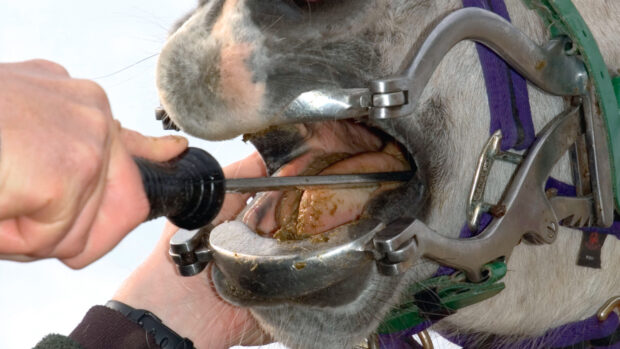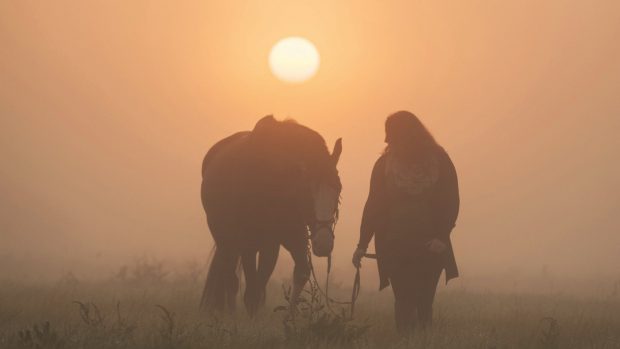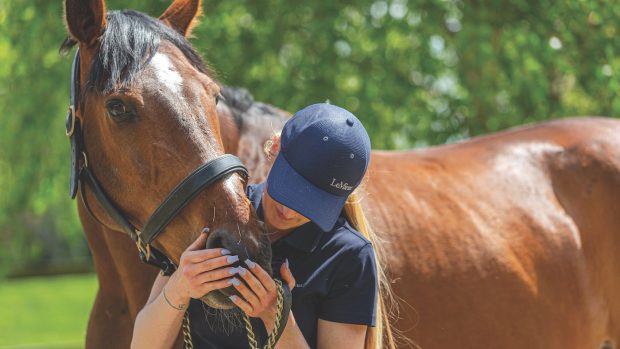Horse owners and vets face difficult decisions everyday. Vet Roger Lee lists the toughest choices an owner will ever have to make and shares his advice to simplify the dilemmas
1. When is the right time to put an old horse down?
This has to be one of the hardest decisions that owners face because horses and ponies become members of the family. Nonetheless, part of our responsibility as owners is to know when a horse’s quality of life has deteriorated to the stage where daily life is too much of a struggle.
Two of the biggest health problems for old horses are weight loss and arthritis. Dental disease and a reduced ability of the gut to process food means older horses eventually lose weight and muscle strength. Weakness combined with stiff, painful joints, makes it increasingly difficult for them to get up — a problem which becomes significantly worse in cold weather.
This means that many owners choose to give their horse a final summer and then put them to sleep in the autumn. Properly done, equine euthanasia is extremely quick and totally painless — and crucially the horse has no idea of what is being done.
I always advise owners that it is better to put a horse down while it is still enjoying life. Most people who know their horses also know instinctively when the time is right. If we wait too long, we risk keeping an old horse going for our sake, not theirs.
2. Do I send my horse in for a colic operation?
Over 80% of colic cases get better with just painkillers and gut relaxants, but this still leaves an unlucky minority that won’t recover without an operation.
Colic operations must be done quickly before the damage to the intestines is too great, so owners have to decide straightaway whether to send the horse for surgery or not.
Colic surgery has improved a lot in the past 30 years and is now a highly advanced speciality with success rates of around 70 to 80%. Send a horse with a surgical colic in early enough and there is a very good chance it will return home again.
Given that the only other option is putting the horse down, why might you decide not to operate? The reasons, as so often, come down to age and cost.
For older horses and ponies, particularly those retired or with other health problems, a major emergency operation may simply be too much to put them through.
The process is also expensive. The initial operation alone will typically cost three to four thousand pounds. If days of intensive care are needed afterwards, or even a second operation, the cost can be much higher — far above what even insured horses are covered for.
For some owners this simply isn’t affordable, particularly as there can never be a guarantee of success.
Following surgery, although there is a prolonged period of box rest — typically three months — there is almost no other aftercare or wound management needed, so cost after surgery is rarely a factor. Most horses tolerate box rest at home pretty well, despite their owner’s concerns.
3. When should a horse “pass” a vetting for purchase?
Few of us are perfect physical specimens, so why should horses be any different? Be it a turned in leg or a filled joint, a sarcoid or a small cataract, every horse will have a few defects that show up on a pre-purchase vetting — especially as it gets older. But does this mean the horse should “fail” a vetting?
The key point is that vets are assessing a horse’s suitability for its intended job and will recommend, or not, going ahead with the purchase based on what they find – it’s not as clear-cut as the horse passing or failing – and this is when the vet’s experience and judgement are crucial.
Clearly a child’s first pony does not need to move like a dressage horse. Allowances need to be made for age, too — a 16-year-old equine is not going to trot off after a flexion test like a six-year-old. A splint will be a big problem for a show horse, but not for an eventer. A young horse may be sound now, but have such poor conformation that it is unlikely to stay sound as its work increases.
The vet has to weigh up all these points and then advise the buyer. A number of findings that may individually appear insignificant can still add up to make a horse too big a risk.
Finally, remember that a vetting is just one person’s opinion on one day. It is not, and can never be, an absolute guarantee that a horse will do the job perfectly. For that you need a crystal ball.
4. Do I send my horse for an MRI scan?
MRI stands for magnetic resonance imaging — a powerful, non-invasive way of viewing the tissues of the body. In veterinary medicine it is particularly useful for imaging horses’ feet, because the hard hoof capsule makes it impossible to see or feel what is happening to the many important structures inside.
X-rays will show the bones, but with MRI we are able to get incredibly detailed images of everything else — including tendons, cartilage and ligaments.
In up to 90% of all lameness cases the pain is coming from the foot. Prior to the advent of MRI a significant number of these cases were left undiagnosed.
However, as with colic surgery, the drawback to MRI is its cost. The scanners are extremely expensive to buy and install and as a result an MRI scan of two front feet will cost in the region of £1,500.
This means that standard nerve blocks and X-rays are usually done first, and only if a vet is unable to pinpoint the cause of lameness will he or she recommend MRI. As an owner, you have to weigh up the cost — particularly if your horse is not insured, or if your insurer will only pay a portion of the cost — against the benefits of a scan.
Whilst an MRI will almost certainly tell you why your horse is lame and how serious the damage is, this is still only a diagnosis and not a treatment. It doesn’t make the horse sound again and unfortunately the inaccessibility of the injured area means treatment options are often quite limited.
Painkillers, steroid injections and time may be the only possibilities — the same treatments your vet is likely to have offered had an MRI not been done. So do you go ahead with an expensive scan that may not change the outcome?
Some people prefer a diagnosis to uncertainty, for others the high cost puts MRI out of reach.
Like this? You might also enjoy reading these:
9 tackroom essentials we couldn’t live without
‘Dopey cobs on the A1’ — and other things that shouldn’t happen to a vet
5. Should my horse have surgery for kissing spines?
Your horse has become reluctant to go forward and has started bucking when you insist. Suspecting it may have back pain, your vet X-ray’s the horse’s dorsal spines — the long, bony “fingers” projecting up from the vertebrae. Some of them appear very close together, with some bony reaction at their edges.
What should you do next? While the X-rays suggest your horse may have kissing spines, they are not conclusive. And nobody wants a major operation that isn’t completely necessary.
The problem is that dorsal spines are not fixed; they move whenever the horse does, so what looks close at rest may be touching when the horse is active. Equally it could be that the back is not painful and your horse is just misbehaving.
Part of the problem is that the clinical signs of back pain are often rather vague, so how can you be more certain that surgery is necessary?
One possibility is to inject a small amount of long acting steroid around the suspect dorsal spinous processes (DSPs). If the horse performs significantly better you have proved there is genuine back pain present. If the improvement is not maintained then you can go for surgery.
These days the operation to remove kissing spines is often done with the horse standing and it has roughly an 80% success rate, while the development of the keyhole technique in which the ligament between the dorsal spines is cut, rather than removing sections of bone is a far less invasive option.
- This article was first published in Horse & Hound’s Ask The Vet magazine




